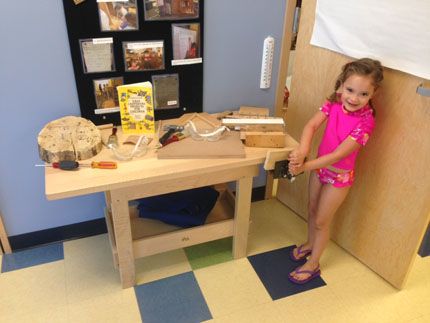STL 90: Gorilla Glue for Fine Furniture
This week on Shop Talk Live, we turn to furniture maker Craig Thibodeau for answers on how to use foamy Gorilla Glue for fine furniture projects. Plus, your questions on planing end grain, working with live edge slabs, and more.
Plus, don’t miss this week’s All Time Favorit Tool of All Time…for this week.
Every two weeks, a team of Fine Woodworking staffers answers questions from readers on Shop Talk Live, Fine Woodworking‘s biweekly podcast. Send your woodworking questions to shoptalk@taunton.com for consideration in the regular broadcast! Our continued existence relies upon listener support. So if you enjoy the show, be sure to leave us a five-star rating and maybe even a nice comment on our iTunes page.
 Mike Pekovich Executive art director |
 Matt Kenney Senior editor |
 Ed Pirnik Senior web producer |
Listen to Previous Episodes
- Shop Talk Live 89: Workbench Wisdom
- Shop Talk Live 88: Marquetry Master Craig Thibodeau
- Shop Talk Live 87: Shop Talk Live Moving to Video
- Shop Talk Live 86: Furniture Maestro Chris Gochnour–Part II
- Shop Talk Live 85: Furniture Maker Chris Gochnour
- Shop Talk Live 84: One Big Problem with Helical Cutterheads
- Shop Talk Live 83: Outfit Your Shop for Under 2-Grand
- Shop Talk Live 82: Matt Kenney’s Controversial Arrest
- Shop Talk Live 81: Weird Woodworking Tools
- Shop Talk Live 80: Workbench Troubles
- Shop Talk Live 79: Ed’s Mysterious Basement Experience
- Shop Talk Live 78: Makin’ Sparks on Yer Tablesaw
- Shop Talk Live 77: A Woodworker’s Dream Job
- Shop Talk LIve 76: The Drunken Woodworker
- see all episodes
























Comments
When it comes to Gorilla, everyone use their polyurethane glue as reference, why not compare their wood glue?
http://www.amazon.com/Gorilla-6205001-18oz-Wood-Glue/dp/B001NN5T22
They are as strong as titebond and cheaper, most importantly not one joint failed on me to date.
By far the worst glue in the market.
you do know Gorilla Glue company makes more than Poly glue right??
I think you missed the biggest problem with the polyurethane glue. Matthias Wandel's tests (on youtube) clearly showed that it is extremely weak if the joint has any gaps, whereas pva glue deals with gaps just fine. I like to undercut joints sometimes so they close up tight, and I am also an imperfect human. So this is ample reason for me to avoid polyurethane glue in most circumstances.
skiggety: Indeed, polyurethane glues do NOT deal well with gaps. That said, PVA glues actually perform worse under gappy conditions - one of the reasons we often advise the use of 2-part epoxy when a woodworker encounters a joint that is "less than stellar" - which happens to the best of us from time-to-time.
Best,
Ed
Ed,
What was the title of the 'kids woodworking book's (?) on the bench in Daughter's photo?
Chris:
It looks like the title is "Easy Carpentry Projects for Children." I was able to find it on Amazon for you: http://tinyurl.com/orj7s53
Cheers,
E
Thanks, Ed.
When you make your Daughter her own first workbench, be sure to do a Video Workshop for it :>)
And be sure to include the 'real' hand tools you outfit it with!
I am not too certain how to react when it comes to kids using heavy tools to be honest. I would rather the removals of all sharp and heavy equipment to the storeroom than risk having the kids in danger! Better to get some house packing services to make sure that the place is childproof!
This glue I haven't tried but I have heard very negative feedback for it.
I think it all comes down to learning how to work with the stuff. Craig's put in the time to understand how the glue works, what to expect, etc. He knows exactly how much to apply to a joint, etc. But at the end of the day - I suppose everybody has their own methods - what works for one guy/girl isn't necessarily going to work for another.
Cheers all,
Ed
"Gorilla glue" certainly has its place, but I'm not sure it's compatible with "fine furniture."
To me, "fine furniture" implies repairable construction, which implies a reversible glue. IMO the glue that best facilitates future repairs a hundred years down the line is hot hide glue.
Joints can be disassembled with heat and moisture.
Hot hide glue sticks to itself, so traces of old glue are not fatal to a repaired joint.
Items glued with HHG from Egyptian pyramids thousands of years old are still solidly glued, so the stuff is certainly durable.
Seriously, 'it's not fine furniture unless it's glued with hide glue'??? Do you cut your trees down with a hand saw and make your own finishes as well? Do you make your own hide glue from little dead animals? Because if you buy it from a manufacturer there might be some technology voodoo mixed into it.
Hide glue is great if you are making million dollar antiques or more likely repairing million dollar antiques, but in a modern shop building for modern clients does it really have a place? Just my 2 cents.
Log in or create an account to post a comment.
Sign up Log in